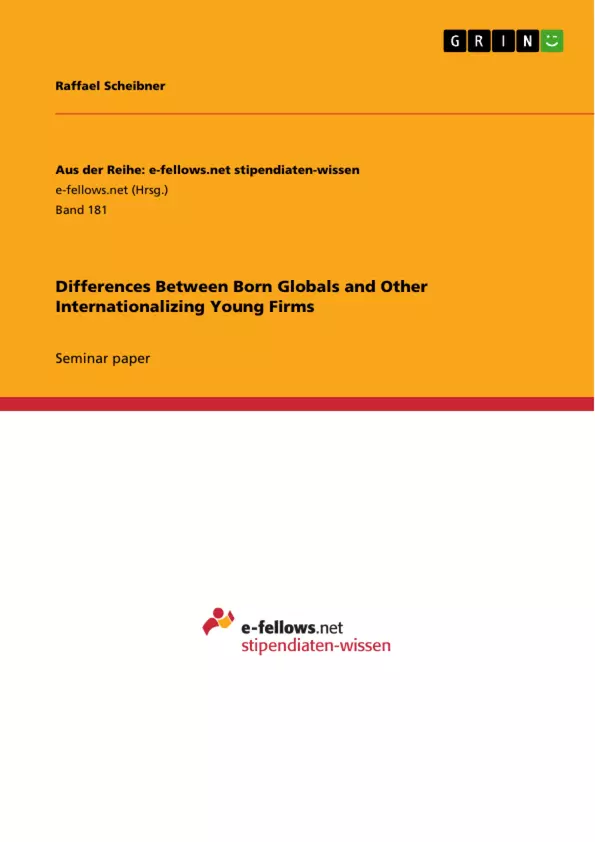It is a well-known fact that in the past decades globalization has taken international trade to another level, i.e. there are more and more companies involved in international business, importing and exporting at a higher level than ever before.
From the scientific point of view though there have been made observations concerning a specific kind of companies whose international activities seem to contradict the traditional, incremental models of the internationalization process of a firm. These traditional theories assume that just after having established a certain domestic market position and having gathered enough business experience the internationalization process of the firm begins (cf. Uppsala-Modell: Johanson and Vahlne, 1977, 1990). The contradiction though consists in the fact that the mentioned specific kind of companies goes international right from its inception and seems to perceive the whole world as one single market which can be entered and supplied just as easy as the domestic one (Oviatt and McDougall, 1994). So what will be discussed in this paper is in general the phenomenon of the so-called born globals (Rennie, 1993) and in specific the differences that might exist between those born globals and other young traditional internationalizing companies.
Inhaltsverzeichnis (Table of Contents)
- Introduction
- Short Discussion of Theoretical Background
- “The Born-Global Phenomenon: A Comparative Case Study Research“ as Background
- Conceptual Framework of the Paper
- Empirical Methodology
- The Case Companies
- Literal Replication
- Theoretical Replication
- Results of the Replications
- Discussion and Conclusions
Zielsetzung und Themenschwerpunkte (Objectives and Key Themes)
This paper explores the phenomenon of "born globals," companies that exhibit international activities from their inception. It aims to identify key characteristics of born globals and differentiate them from traditional internationalizing firms, known as "late internationalizers." This analysis seeks to understand the factors driving their success and potentially develop new models and theories for better understanding global entrepreneurial activities.
- Understanding the "born global" phenomenon
- Identifying key characteristics that distinguish born globals from traditional internationalizing firms
- Developing new models and theories for global entrepreneurial activities
- Exploring the role of founder characteristics, organizational capabilities, and strategic focus in the internationalization process
- Analyzing the impact of risk-avoidance and psychic distance on internationalization decisions
Zusammenfassung der Kapitel (Chapter Summaries)
- Introduction: This chapter introduces the concept of born globals, highlighting their contrasting behavior with traditional internationalizing firms and the need for further research to understand their success factors.
- Short Discussion of Theoretical Background: This chapter delves into the concept of internationalization timing, contrasting born globals with late internationalizers. It introduces key dimensions of analysis: founder characteristics, organizational capabilities, and strategic focus.
- “The Born-Global Phenomenon: A Comparative Case Study Research“ as Background: This chapter presents the paper's core methodology, focusing on a comparative analysis of four Spanish SMEs from Catalonia. It outlines the conceptual framework, empirical methodology, and the specific characteristics of the case companies.
Schlüsselwörter (Keywords)
The paper focuses on the internationalization process of firms, particularly the "born global" phenomenon. Key themes include international new ventures, global start-ups, instant exporters, late internationalizers, late exporters, traditional exporters, founder characteristics, organizational capabilities, strategic focus, risk-avoidance, and psychic distance.
- Quote paper
- Raffael Scheibner (Author), 2010, Differences Between Born Globals and Other Internationalizing Young Firms, Munich, GRIN Verlag, https://www.grin.com/document/176680



